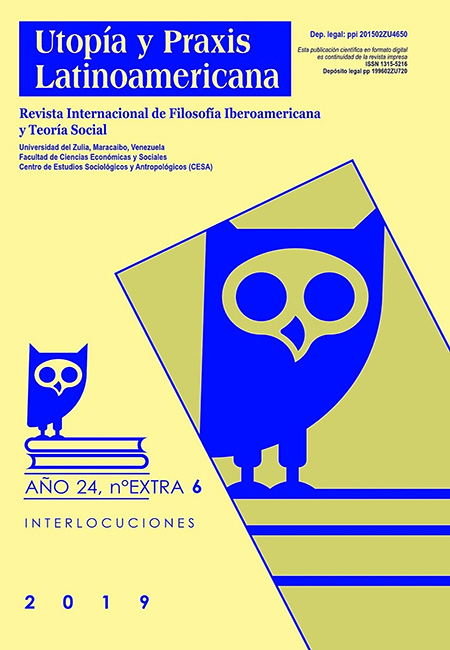Language barriers to effective communication
Resumen
ABSTRACT
Globalization and communication technology are bringing the world closer together in a global village, including language barriers. The things that prevent us from understanding each other's constitute a common challenge to individuals, groups, international companies, governments, nations, and the whole world. This qualitative study aimed at exploring the factors that cause language barriers, their types, and their impact on effective communication and our life as well as ways to make people aware of the importance of overcoming them. The study concluded that language or semantic barriers arise from different subjects such as meanings and uses of words, symbols, images, gestures, languages and dialects.
RESUMEN
La globalización y la tecnología de la comunicación están uniendo al mundo en una aldea global, incluyendo barreras del idioma. Las cosas que nos impiden entendernos constituyen un desafío común para las personas, los grupos, las compañías internacionales, los gobiernos, las naciones y el mundo entero. Este estudio cualitativo tuvo como objetivo explorar los factores que causan las barreras del idioma, sus tipos y su impacto en la comunicación efectiva y nuestra vida, así como las formas de sensibilizar a las personas sobre la importancia de superarlas. El estudio concluyó que el lenguaje o las barreras semánticas surgen de diferentes temas, como significados y usos de palabras, símbolos, imágenes, gestos, idiomas y dialectos.
Citas
BIBLOGRAPHY
ABDULLAH YA, Text and Translation of the Holy Quran, Surah 20, Ta Ha, verses: 25-28. Dar Al-Faqih, p.370.
BOWEN, S (2015). The impact of language barriers on patient safety and quality of care Ottawa, ON, Canada: Société Santé en français.
CHENG, Z (2015). Intercultural communication difficulties and their effects on flight safety.
CHO, H, GAY, G, DAVIDSON, B, & INGRAFFEA, A (2007). “Social networks, communication styles, and learning performance in a CSCL community”, in: Computers & education, 49(2), pp.309-329.
DRURY, CG, & MA, J (2002). Language Error Analysis Report on Literature of Aviation Language Errors and Analysis of Error Databases.
DRURY, CG, MA, J, & MARIN, C (2005). Language error in Aviation maintenance Final Report Marin, University of Buffalo, the state university of New York.
EFFECTIVE COMMUNICATION, URL: https://www.tutorialspoint.com/effective_communication/effective_communication_tutorial.pdf.
FISCHER, U, ORASANU, J, DAVISON, J, & ROSEKIND, MR (1996). Cross-Cultural Barriers to Effective Communication in Aviation.
GRANEK, L, KRZYZANOWSKA, MK, TOZER, R, & MAZZOTTA, P (2013). “Oncologists' strategies and barriers to effective communication about the end of life”, in: Journal of oncology practice, 9(4), pp.e129-e135.
IBID, AL-QASAS, Verse, 35, p.22-473.
JUREDDI, DN, & BRAHMAIAH, N (2016). Barriers to effective communication. Journal of English Language and Literature, 3(2), pp.114-115.
LAURING, J (2008). “Rethinking social identity theory in international encounters: Language use as a negotiated object for identity making”, in:. International Journal of Cross Cultural Management, 8(3), pp.343-361.
LEE, SM (2003). A review of language and other communication barriers in health care. Portland: US Department of Health and Human Services.
LI, S, PEARSON, D, & ESCOTT, S (2010). “Language barriers within primary care consultations: an increasing challenge needing new solutions.”, in: Education for Primary Care, 21(6), pp.385-391.
LUNENBURG, FC (2010). “Communication: The process, barriers, and improving effectiveness.”, in: Schooling, 1(1), pp.1-10.
MARUME SBM, JARICHA E, & CHIUNYE, TM (2016). “Communication”, in: International Journal of engineering Science Invention, 5(6), pp.26-32.
MEUTER, RF, GALLOIS, C, SEGALOWITZ, NS, RYDER, AG, & HOCKING, J (2015). “Overcoming language barriers in healthcare: a protocol for investigating safe and effective communication when patients or clinicians use a second language”, in: BMC health services research, 15(1), p.371.
NARAYAN, L (2013). “Addressing language barriers to healthcare in India.”, in: National Med J India, 26(4), pp.236-8.
SEXTON, JB, & HELMREICH, RL (2000). “Analyzing cockpit communications: the links between language, performance, error, and workload”, in: Human Performance in Extreme Environments, 5(1), pp.63-68.
TAYLOR, SP, NICOLLE, C, & MAGUIRE, M (2013). Cross-cultural communication barriers in health care. Nursing Standard (Through 2013), 27(31), p.35.
TENZER, H, & SCHUSTER, T (2017). “Language barriers in different forms of international assignments”. In Expatriate Management (pp. 63-100). Palgrave Macmillan, London.
TER-MINASOVA, SG (2008). “War and peace of languages and cultures.”, in: Slovo, pp.297-342.
WERFELMAN, L (2008). “Language barrier”, in: AeroSafety world, p.3.
WIENER, ES, & RIVERA, MI (2004). Bridging language barriers: how to work with an interpreter. Clinical pediatric emergency medicine, 5(2), pp.93-101.










